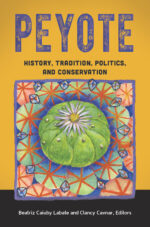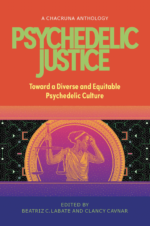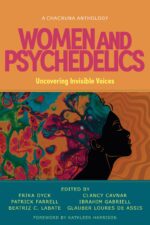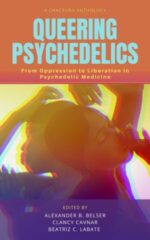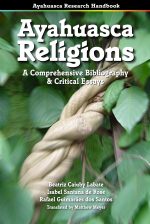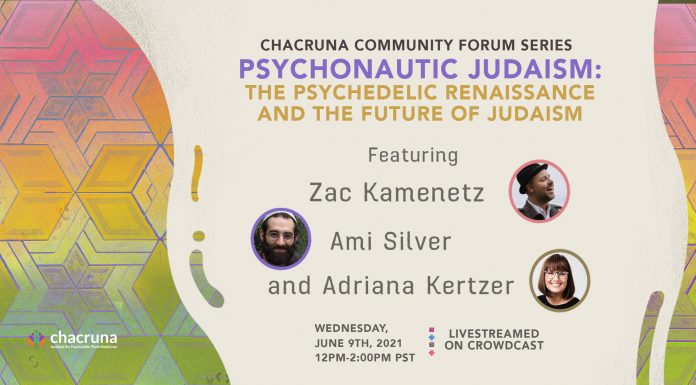- After 2024, the Scenario for Psychedelic Therapies Can Only Improve - January 16, 2025
- Symposium in Brazil Debates Psychedelics at a Political Crossroads - December 13, 2024
- Conference in Rio Defends Psychedelics in Public Health - December 11, 2024
Psychedelics have a long history with sexuality, beginning in modern times with the sexual revolution and the hippies who preceded the prohibition of LSD and other mind-altering drugs. There is also an old and perverse side to this relationship, such as the treatment of homosexuality and drug-assisted sex abuse; a vulnerable spot in the psychedelic renaissance.
The positive image of psychedelics promoted by neuroscience, now as promising treatments for mental disorders like depression, does not go well with the idea that those substances might be used in conversion therapies, the so called “gay cure.”
The positive image of psychedelics promoted by neuroscience, now as promising treatments for mental disorders like depression, does not go well with the idea that those substances might be used in conversion therapies, the so called “gay cure.” Clancy Cavnar tells us that, in the 1960s and 1970s, LSD was used with the purported goal of curing homosexuals, including by therapists revered to this day, such as Stanislav Grof (although he reports he only treated patients tormented by their sexual orientation).
“The therapists using psychedelics to change sexual orientation in the 60s and 70s were mavericks who, based on the limited understanding of homosexuality at the time, were experimenting, though it was no doubt damaging to the patients, it was not driven by religious fervor or denial of since-understood science,” says the therapist and Chacruna Institute director in a written interview with the Brazilian blog, Virada Psicodélica.
“I doubt that the few remaining providers of conversion therapy, which has been widely exposed as being damaging and ineffective, are knowledgeable about psychedelics or see any potential in them, since they are largely religious-based programs who, as they claim, are ‘faith based’ (as opposed to evidence based).”
She quotes a 2008 internal document of the ayahuasca cult União do Vegetal (UDV) where its leaders state: “…we could never agree with the practice of homosexualism, as it goes against the natural origin of human existence, the relationship between man and woman that begins generation.”
Cavnar, who runs Chacruna with Brazilian anthropologist Bia Labate, dedicated her 2011 doctoral dissertation in psychology to The Effects of Participation in Ayahuasca Rituals on Gays’ and Lesbians’ Self Perception. She quotes a 2008 internal document of the ayahuasca cult União do Vegetal (UDV) where its leaders state: “…we could never agree with the practice of homosexualism, as it goes against the natural origin of human existence, the relationship between man and woman that begins generation.”
Join us for our next conference!
Contacted by the blog Virada Psicodélica in order to clarify if the church maintains its homosexuality condemnatory doctrine, UDV only reiterated an official communiqué handed last year to Brazilian journalist Carlos Minuano, prompted by his article Right-Wing Psychedelia: Polarization grows worse among ayahuasca users (in Portuguese).
Although not recanting its 2008 “religious position” on the matter, UDV says in the note that, “its goal is to work for human beings in order to develop their moral, intellectual, and spiritual virtues, making no distinction of color, gender, political ideology, religious creed or citizenship,” and adds: “UDV embraces all those who seek it, with no prejudice, judgment or discrimination whatsoever.”
“There is an emphasis in ideals such as the ‘cosmic balance,’ the ‘sacred family,’ the ‘divine union of male and female,’ the ‘coming together of opposites,’ etc., that ends up serving as the basis for a heteronormative, patriarchal, and macho discourse,’ says Bia Labate. “In this sense, the ‘gay cure’ develops as a program and as a mission. Unfortunately, this is quite common.”
In professional, clinical, non-religious contexts, this “conversion” sounds unthinkable nowadays, especially after homosexuality ceased being considered a pathology in the 1970s. However, since there is at least one UDV leader (Luís Felipe Belmonte), and even medical doctors and psychologists in the right-wing President Jair Bolsonaro’s sphere of influence, it wouldn’t be a big surprise if those people resort to ayahuasca’s DMT or another psychedelic in order to round up sheep that have gone astray from what they claim as the naturally virtuous path.
“To use ayahuasca with the goal of ‘converting’ gays, euphemistically referring to this as ‘evolution’ or ‘spiritual transformation,’ is unacceptable,” states Labate. “We know that many people inside UDV are against the antigay manifesto. These voices need to be supported.”
This potential abuse, one that would certainly harm the impending medical rehabilitation of psychedelics, contrasts with another type of danger; in this case, quite real, both in the past and now: harassment. Sexual abuse committed by professional therapists and healers is as old as the notion that psychedelic compounds have the power to send people to other worlds
The plot, one that does not need to involve psychoactive substances, is well known in Brazil from scandals with perpetrators such as the psychic healer João de Deus, the artificial reproduction specialist Roger Abdelmassih, and the guru Prem Baba: an authority figure supposedly invested with the power to cure or to enlighten, takes advantage of fragile patients or disciples to obtain sexual gratification or, simply put, to rape them.
When psychedelics are added to the mixture, the usual situation of risk is compounded by at least three specific factors. First, its association with the sexual freedom embraced by the countercultural movement, a revolution that had its victims along the way.

Not a few psychedelic therapy providers before and after prohibition are themselves users of the substances and subscribe to unconventional notions related to sex. In the underground clinical environment, these practices were impacted by criminalization of the substances, lack of oversight by professional bodies, and the inherent secrecy of psychotherapy itself. These factors did not facilitate the emergence of denunciations, not to speak of them being heard and having consequences.
Secondly, depending on the substance, the psychonaut may become physically and mentally incapacitated and very suggestible for hours at a time, which makes for a high degree of vulnerability. Finally, psychedelics can have an aphrodisiac effect, predisposing the person in search of healing or wellbeing to project her or his desire unto the facilitator.
“We have both heard a lot about sexual abuse just from being in the plant medicine community for such a long time,” says Cavnar. “There is always some scandal being whispered about, but a lot of hesitancy to expose the players because of the legal implications for everyone involved and feelings of protection for the practice itself, keeping it from being seen as an abusive practice involving sexual misbehavior and drugs.”
Cavnar claims to know a few cases of women that seek sex adventures with shamans or apprentice themselves seeking spiritual powers in agreeing to sex with shamans. “Some never regret these adventures, some marry the shaman and ‘go native’ and, perhaps, some live to regret” she says. “But these are not the stories that people seek Chacruna out for. More often, it is the story of an intoxicated woman who does not understand what is happening and in a foreign land, foreign culture, and idolizing a mysterious healer from the jungle, does not know what to do or who to turn to after a violation.”
This, of course, does not authorize anyone to minimize the responsibility on the side of the therapist or shaman; much the opposite. Even if an intoxicated participant expresses poor judgement in a vulnerable state, it still behooves the facilitator or shaman to understand this vulnerability and protect the participant from making poor choices, Cavnar points out.
Cases of abuse are not restricted to underground clinics and obscure rituals, though, as pointed out by Will Hall, in an essay that shook the psychedelic community in September, “Ending the Silence Around Psychedelic Therapy Abuse.” Hall recounts an appalling history of abuse accusations, such as those levelled against therapists Rick Ingrasci (1989), charged with abusing three patients after giving them MDMA, and against Francesco DiLeo, his friend.
The essay author tells about his own traumatic sexual involvement with the therapist couple, Aharon Grossbard and Françoise Bourzat in the 1990s in San Francisco. He also mentions the case of abuse denounced by Meaghan Buisson, a Canadian volunteer who took part in a 2015 clinical trial with MDMA for post-traumatic stress disorder (PTSD) run by Richard Yensen.
The latter occurrence raises special concern because it happened in the context of the most advanced research expected to validate a psychedelic substance (MDMA) as treatment for a mental disorder (PTSD). The 2015 trial was still in phase II, but other trials sponsored by the Multidisciplinary Association for Psychedelic Studies (MAPS) progressed since then to phase III, and there is an expectation that MDMA-assisted psychotherapy for PTSD will get approval from the FDA in 2023.
MAPS reacted to Hall’s essay with this note. In the association’s protocol for treatment, during MDMA dosing sessions, the patient is handled continuously by a couple of therapists, in the assumption that a gender-differentiated team might inhibit sexual advances.
Hall criticizes the fact that the informed consent employed in the MDMA studies do not include among MDMA-associated risks its known effects on sexual arousal.
Hall criticizes the fact that the informed consent employed in the MDMA studies do not include among MDMA-associated risks its known effects on sexual arousal. Besides this, he indicts media stories about psychedelics and popular books, such as Michael Pollan’s How to Change Your Mind, as marketing of a rosy version of psychedelics, revamped in the present renaissance as “treatments,” no longer referred to as the powerful “drugs” they still are.

Discover the Indigenous Reciprocity Initiative of the Americas
The prohibition of sexual encounters with patients before, during, and after treatment is a basic rule in any ethical handbook for psychotherapists, as MAPS makes clear. In face of the specificities of psychedelic-assisted therapies, though, prudence recommends giving more emphasis to the inherent risks of the treatment to prevent scandals from contaminating news about the psychedelic renaissance that have, so far, been very positive.
Chacruna, for example, has published sexual awareness guidelines in many languages. Pollan himself, in a Chacruna live event with Labate on November 18, 2021, pointed out that sex abuse scandals are an Achilles heel that might bring about a media backlash, something that, in his opinion, always happens in the U.S. with any subject that becomes popular.
Coincidence or not, sex is going to be given special consideration in the 2022 Global Drug Survey (GDS 2022), an influential online survey about drug uses and practices in various countries.
Coincidence or not, sex is going to be given special consideration in the 2022 Global Drug Survey (GDS 2022), an influential online survey about drug uses and practices in various countries. According to the goals listed in the survey, GDS 2022 seems to be more interested in the positive effects of psychedelics on sexuality. Perhaps something less oriented to pleasure would arise in questions directed to those who have experienced any kind of sexual trauma in order to uncover if they have found their use of psychedelics to have had any impact here, as indicated in the GDS2022 webpage.
To prevent the rosy bias criticized by Hall, it would be wise to include in the survey explicit questions about sexual abuse suffered under the influence of psychedelics, be it in clinical, ritual, or recreational contexts. Uncommon as this kind of abuse might be, getting to know its true dimensions, and devising means of prevention, are the safest way to keep predators from muddying the psychedelic waters that have just started to flow unconstrained.
Art by Trey Brasher.
—
Note:
This article was originally published in Portuguese by Folha de S.Paulo in the blog Virada Psicodélica.
Take a minute to browse our stock:
Did you enjoy reading this article?
Please support Chacruna's work by donating to us. We are an independent organization and we offer free education and advocacy for psychedelic plant medicines. We are a team of dedicated volunteers!
Can you help Chacruna advance cultural understanding around these substances?




